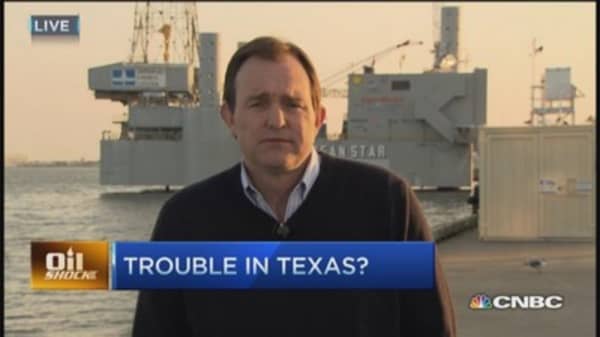This oil bust may not be so bad.
Since the first big gusher came roaring out of the ground on Spindletop Hill in Beaumont in 1901, Texas has been through its share of oil booms and busts. From the oil shocks of the 1970s, through oil price collapses in the 1980s and 1990s, the oil and gas industry's fortunes have had an outsized impact on the overall Texas economy.
Now, with a barrel of oil trading for roughly half what it fetched last summer, the Texas oil patch is bracing for another downturn. The rig count is down 29 percent from its October peak and more cuts are expected as producers slash spending plans.
Meanwhile, the supply of unsold oil is filling up remaining storage space. U.S. crude stocks rose by almost 5 million barrels last week to reach nearly 418 million barrels, the highest level since records were first kept in 1982. That glut will continue to weigh on prices for some time.
Read MoreOil tops $60 for first time in 2015, industry spending cuts support
The price plunge caps a boom that helped Texas weather the Great Recession better than many states and recover more quickly. The state's jobless rate—currently at 4.6 percent—remained below the national average. Unlike many parts of the country, housing prices have come back and topped prerecession levels.
The boom in oil and gas production was accompanied by a sharp rise in hourly wages and employment. As of December, Midland, Texas, had the lowest jobless rate—2.1 percent—of any metro area tracked by the Bureau of Labor Statistics. That's less than half the national average.




